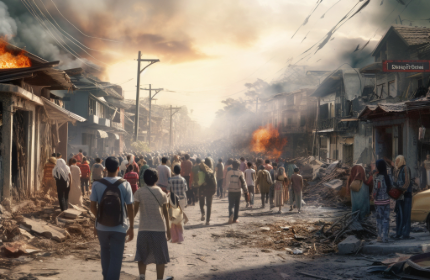Safe Havens: Protecting Children in Conflict Zones
Introduction: The Plight of Children in Conflict Zones
Children are often the most vulnerable victims of armed conflicts around the world. They are exposed to unimaginable horrors, including violence, displacement, and loss of loved ones. According to UNICEF, an estimated 420 million children, or one in five children worldwide, are currently living in conflict-affected areas. These children face numerous challenges, including limited access to education, healthcare, and basic necessities. In such dire circumstances, safe havens play a crucial role in protecting and providing essential support to these children.
Understanding Safe Havens: A Lifeline for Children
Safe havens are designated areas or facilities that offer protection, shelter, and support to children affected by armed conflicts. These havens provide a safe space where children can find refuge from the violence and chaos surrounding them. They offer a range of services, including psychosocial support, education, healthcare, and recreational activities, to help children heal and rebuild their lives.
One example of a safe haven is the Za’atari refugee camp in Jordan, which houses thousands of Syrian children who have fled the ongoing conflict in their country. Within the camp, organizations like UNICEF and Save the Children have established child-friendly spaces where children can engage in recreational activities, receive counseling, and access education. These safe havens not only provide physical safety but also offer a sense of normalcy and hope for a better future.
Challenges and Solutions: Establishing Effective Safe Havens
Establishing effective safe havens in conflict zones is not without its challenges. Limited resources, inadequate infrastructure, and security concerns often hinder the establishment and maintenance of these havens. Additionally, the sheer scale of the problem and the constant influx of displaced children make it difficult to provide comprehensive support to all those in need.
However, despite these challenges, there are several solutions that can help overcome these obstacles. First and foremost, increased funding and resources are essential to ensure the proper functioning of safe havens. Governments, international organizations, and individuals must come together to provide the necessary financial support to establish and sustain these havens. Additionally, partnerships between local communities, NGOs, and governments can help leverage resources and expertise to create a more comprehensive and effective response.
Furthermore, investing in education and training for staff working in safe havens is crucial. Equipping them with the necessary skills and knowledge to address the specific needs of children affected by conflict can greatly enhance the quality of care provided. Additionally, involving children in the decision-making process and ensuring their voices are heard can help create a sense of ownership and empowerment within the safe havens.
The Way Forward: Ensuring Lasting Protection for Children
While safe havens provide immediate protection and support to children in conflict zones, it is essential to ensure lasting protection for these vulnerable individuals. This requires addressing the root causes of conflicts and working towards sustainable peace. Governments and international organizations must prioritize conflict prevention, mediation, and peacebuilding efforts to create a safer environment for children.
Furthermore, investing in long-term development programs is crucial to address the underlying issues that perpetuate conflicts. Access to quality education, healthcare, and economic opportunities can help break the cycle of violence and provide children with a brighter future. Additionally, strengthening child protection systems and ensuring accountability for crimes committed against children are essential steps towards lasting protection.
In conclusion, safe havens play a vital role in protecting and supporting children in conflict zones. They provide a lifeline for children who have experienced unimaginable trauma and offer them a chance to heal and rebuild their lives. However, establishing effective safe havens requires overcoming various challenges, including limited resources and security concerns. By investing in these havens, addressing the root causes of conflicts, and prioritizing long-term development, we can ensure lasting protection for children and create a more peaceful and just world for future generations.




